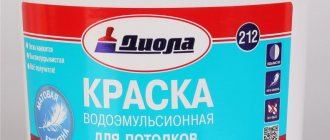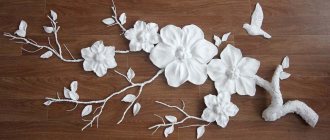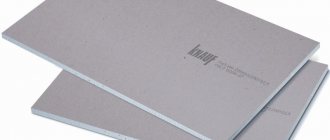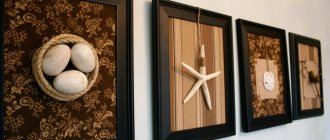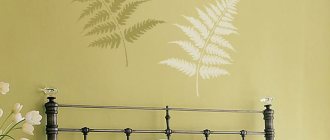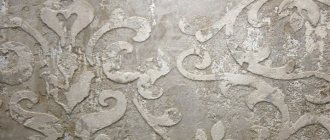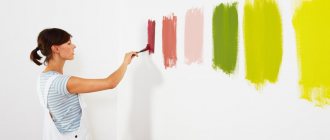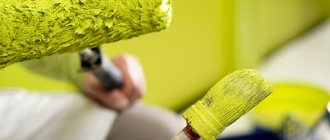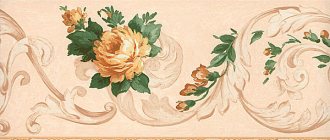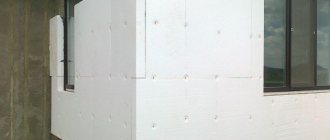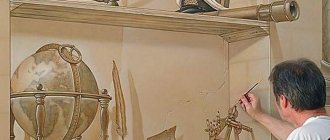Stucco is considered an antique architectural tradition that gained popularity back in Ancient Greece. Despite the variety of existing styles for interior design, the desire to equip their own home with similar decor has not disappeared among its modern residents.
Let's talk about how to decorate a wall surface with stucco with your own hands, using inexpensive materials.
What is stucco made from?
Once upon a time, the drawing on the wall surface was created manually. A specially prepared solution was applied by specialists to the plaster and transformed into original patterns, hence the name - stucco. When molding was invented in production, stucco became an accessible method of wall decoration.
Metal forms allow you to create a variety of ornamental elements without additional finishing. Without loss of high quality, all forms can withstand at least 2000 excellent pours.
In the process of creating stucco, a positive result depends on the quality of the materials used, which include:
Creating a bas-relief with your own hands
Anyone can implement a complex technique for decorating a wall at home. Beginners are recommended to perform static and mobile elements.
- The first type can be carried out immediately on a vertical plane.
- The finished result will be located in its place.
- The second type can be mounted separately and subsequently laid out certain compositions on the wall surface.
- Next, using special glue, thin nails or self-tapping screws, it is possible to firmly fix the products to the surface.
Thanks to the three-dimensional painting, it is possible to hide minor defects and get rid of various cracks and irregularities. In addition, the elements perform decorative qualities. As a rule, they are intended to serve as central objects in the interior space.
Ornaments can be used to decorate the structure of the fireplace, window and door openings.
- It is first necessary to properly prepare the surface. To do this, the surface is treated with a primer composition, which increases adhesion between the elements.
- After this, I proceed to leveling and plastering the surface. In this way, it is possible to get rid of large cracks, voids and various defects. It is recommended to apply the plaster solution onto a fine reinforcing mesh. Thanks to it, it is possible to increase the strength of parts and prevent the occurrence of cracks and breakages.
- After this, they proceed to applying the putty mixture. Fiberglass is used in this work. This material helps prevent the occurrence of small cracks. Next, the room is left to dry on its own for 4 days.
All space that will be decorated must be separated using masking tape. Now you can move on to drawing. First, a finished sketch is drawn on the plane.
To make the image clear, you can use tracing paper. Violet sketch borders will appear on the wet plaster, which will then be carefully filled with gypsum composition.
Proper preparation of the working solution is of particular importance. For each element it is recommended to use a minimum volume of bulk components. The fact is that the mixture dries quickly upon contact with air masses in the room.
You can apply relief elements in small strokes. In this case, it is not advisable to apply the entire thickness. The fact is that incorrect formation of the product will ruin the result.
Acrylic paint will help add brightness. It can be applied only after the gypsum blank has completely dried. The central part should be brighter than the edges. They are performed using the penumbra technique. To ensure that the gypsum elements do not lose their strength, they are covered with several layers of transparent varnish.
Gypsum
Ecological, maximum resistant to temperature changes. During hardening, the gypsum mass becomes larger and even has the ability to penetrate small cracks. The plasticity of this material facilitates the workflow associated with plaster decoration.
Gypsum is not difficult to process, which is why it is not difficult to give the finished product the required size. When working with stucco from this material, you can mask surface defects, as well as various damage to elements that often appear during transportation.
When creating gypsum stucco molding in a workshop at home, it is important to shake the mold that is filled with mass to eliminate air bubbles.
Gypsum cladding also has its disadvantages: considerable weight, which negatively affects the durability of the finish. Also, gypsum does not repel moisture, but attracts it, which leads to the formation of fungus on the surface.
You can get rid of this drawback by applying a special protective agent to the stucco molding.
Materials used
Previously, stucco was made from cement, lime, gypsum or plaster. All this was mixed, diluted and applied to the surface. Today you can buy several options on sale:
- Gypsum mixture;
- Finished parts made of polyurethane or foam.
Both materials require painting and have their advantages and disadvantages.
Polyurethane is durable, pleasant to the touch and is as close in structure as possible to real plaster jewelry. It is not afraid of temperature changes, humidity and minor mechanical damage. You can paint it with any paint, including those that imitate antiquity.
Products made from polyurethane differ in flexibility. This allows you to work with them even on uneven surfaces.
10% discount
Design project for free
Author's supervision is free
Profitable proposition
10% discount on repairs!
Everyone, if you make an advance payment under the repair contract, you will receive a 10% discount.
100% refund guarantee if you are not satisfied with the quality.
GC "Fundament" guarantees the return of the prepaid amount if you are not satisfied with the quality of our services. Repair warranty 5 years.
more details
Save up to 20%
When ordering a major overhaul, interior design is FREE!
All those who have entered into an interior design contract will receive a full refund of the cost of a standard project at the final stage of renovation.
100% refund guarantee of the entire cost of the interior project.
In case of concluding a contract for a comprehensive renovation with payment upon delivery, the full cost of the interior project will be returned at the final stage of the renovation. In case of full prepayment, you will immediately receive a 10% discount on repair work and a full deduction of the design cost.
more details
Save up to 25%
Full control of the object and equipment for FREE!
When concluding a contract for design or repair, architectural supervision is free!
Guarantee of full compliance with the developed project.
Daily designer supervision over the compliance of the repairs being carried out with the project. Selection and control of the supply of finishing materials, plumbing, furniture, textiles and decor.
more details
Polystyrene, or in other words foam, is light, flexible and cheap. Apartment design today includes ceiling skirting boards made of this material. The only drawback can be considered the quality of the material, since dents remain on it.
If there are children or pets in the house, it is better to replace polystyrene with a more durable material or use it at a certain height.
Gypsum stucco is considered the most complex; only craftsmen with experience and certain skills can work with it. The weight of the finished products is greater than that of more budget materials, so it will be more difficult to secure it; glue alone is not enough. Despite this, gypsum is in demand because of its appearance, which is as close as possible to the original stucco moldings and the ability to make almost any shape and pattern from it.
view album in new window
In the photo: Living room interior in a classic style apartment
Polystyrene
This type of stucco in the interior has an acceptable cost, but cannot boast of exclusivity. The decoration is very fragile and requires careful handling, which is why it is mainly used for finishing the ceiling surface and the upper part of the wall.
Polystyrene production is carried out automatically. High quality elements are obtained by extrusion from a pre-melted composition.
Their texture does not have the distinctly contoured granules found in polystyrene foam, which is produced by foaming. Because of this grain, the stucco molding loses the clarity of the ornament.
Certain forms produce extruded foam, which has a high degree of density, the durability of which is comparable to polyurethane and solid wood.
Empire style
Empire style is a style in which decorative stucco molding acquires solidity and key importance. The status of a room in the Empire style is sometimes breathtaking, and the owner of such a room feels like a true pharaoh of our time.
The gypsum elements here are massive and monumental. Small stucco elements can only add to the mood.
Festoons and medallions
Festoons or garlands imitate original plant decor and are placed in the upper part of the wall surface. Medallions are panels with a pattern of colors.
Niches. They are installed on wall surfaces; frames for niches can be purchased separately. Often the bottom of overhead niches is made of frosted snow-white organic glass, which makes it possible to organize high-quality lighting.
For these purposes, a dim lighting device is installed under the glass surface, which, effectively illuminating the details arranged in a niche, emphasizes their incredible attractiveness, giving exclusivity to the palette.
Rococo
Rococo style implies light and flirty elements. Lush, but at the same time weightless forms give the room romanticism and a feeling of heavenly stay.
Asymmetry and elaborate crimp perfectly complement the image of such a design. Great importance is attached to painting elements in gold or patina.
Domes
Used as ceiling decoration in the Empire style. You can create a painting on the dome by hanging a chandelier inside, which will be a rather original solution.
Remember, well-chosen decor will transform any room. And if you decorate an ordinary wall surface with stucco, you can get cozy, extravagant apartments, where many emotions reign - from severity to solemn pomp.
The material was created with the support of: https://designstilno.ru
Briefly about the history of the appearance of stucco decorations
We can safely say that the history of relief designs used to decorate the walls of a home began at the dawn of human civilization. Over time, architectural art arose in which three-dimensional elements were actively used to decorate walls and ceilings. Ancient palaces and temples have still been preserved, the facade and interior walls of which are decorated with numerous stylized plant-themed ornaments, as well as scenes from ancient history and mythology.
The exact time of the appearance of the first stucco decorations is unknown, but the beginning of the modern art of stucco decoration was laid by ancient Egyptian architects and artists. At first, reliefs were carved in stone, but this was a long process, so ceramic decor appeared, made from clay, which was then fired.
The ancient Egyptian stucco decorations of palaces and temples, preserved over the past millennia, still amaze with their sophistication
Somewhat later, the same Egyptian craftsmen discovered that it was easier to make relief jewelry from alabaster powder obtained from gypsum stone, which hardens very quickly when mixed with water. Therefore, having prepared the mixture, they began to pour it into stone molds, which made it possible to significantly speed up the process.
However, stucco art reached its peak in the era of antiquity. It was during this period that the foundations of the technology and aesthetic trends of relief decoration were formed in Ancient Greece and Ancient Rome.
Stucco molding is an integral part of ancient architectural art
This trend truly received a “rebirth” in Europe during the Renaissance, when ancient motifs began to dominate art and architecture again. They remain classics to this day and are used in a variety of styles.
Different eras and emerging styles introduced their own motifs into the art of stucco. In their own way, they manifested themselves in “Gothic”, “Renaissance”, “Baroque”, “Rococo”, “Classicism”, “Modern”, “Empire” and other directions.
The history of decorative stucco in Russia is about three hundred years old - such decorations quickly became fashionable during the period of Europeanization begun by Peter I. It is difficult to even find a city building built in the 18th-19th centuries, the architecture of which did not use stucco decorations.
It must be admitted that to the eyes of a modern person such an oversaturation of stucco molding is incomprehensible and looks like an obvious excess.
In the last century, the use of stucco began to decline - other styles of home decoration came to replace it. But, although pragmatism is gradually replacing “pretentiousness,” stucco molding is still used to this day for exclusive interior decorations. Many owners of houses and apartments are looking for opportunities to decorate their premises with similar elements.
Why not? The main thing is that it should be in moderation and not look kitsch.
Photo of stucco on the walls
RODECOR
RODECOR is PITERRA's own brand. Its products are stucco decorations made from polymer gypsum. The special properties of this material allow designers and technologists to create patterns of amazing beauty and complexity, inspired by the architectural masterpieces of past eras.
Combining an aristocratic atmosphere and comfort: designer Olga Vasilenkova
To date, four collections of RODECOR stucco decor have been released: “Tsarskoye Selo Rococo”, “Legends of Art Deco”, “Three Centuries of Baroque”, “Chinoiserie Garden”.
Each of them is distinguished by its originality and is the embodiment of the talent of designers. Read more about these collections in our article
.
The original interior of the hallway with RODECOR stucco molding: catches you at first sight, making you forget about everything and look at every element, like the work of a famous artist
Our video will tell you about the interior and facade decor lines made of polyurethane foam and polymer gypsum from the Europlast and RODECOR brands:
Top materials for stucco molding in public places! Let's figure it out together with Elena Akhmadeeva
Now you know that it is not at all necessary to strive for antique pomp when decorating walls with stucco. The photo below is an example of rethinking the classics using simple elements from the Europlast collection of stucco decor from designers Vladislav Podgorelov and Ekaterina Svetozarova. As you can see, to get a spectacular interior with stucco on the walls it is not at all necessary to use elements sparkling with excessive luxury.
Stucco decoration will help make interior solutions unique in any style. We wish you creative discoveries!
Installation instructions
The installation technology will depend on what material underlies the stucco molding and the base of the wall. First, you need to adapt the products indoors within 24 hours if they are made of polyurethane. Then the surface treatment begins, it must be cleaned of grease stains, dust and other contaminants, and then dried and covered with primer.
To work you will need some tools, for example:
- glue gun;
- spatulas;
- hammer;
- chop cord.
To make the markings you will need a pencil. Consumables include not only glue and mechanical fasteners, but also sandpaper. If glue is still visible on a surface where glue should not remain, it can be wiped off with white spirit or acetone.
After marking, you need to measure the corners. Glue is applied to the surface, and then the element is glued and pressed to the base. If excess glue appears, it must be removed immediately. Additionally, the products should be secured with self-tapping screws, which are removed after a day, if provided. Otherwise, the caps are filled with putty. Surface joints must be cleaned of dust before installing the next element. These areas are sanded to provide better grip.
